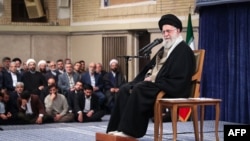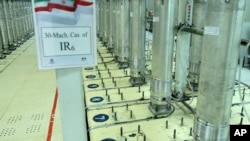
The United States on Wednesday announced sanctions against the Foxtrot Network, a Sweden-based gang accused of carrying out attacks against Israeli interests in Europe on behalf of Iran.
Describing Foxtrot as one of Sweden's "most notorious criminal gangs," the U.S. Treasury and State Departments also placed sanctions on its leader Rawa Majid, with both agencies saying in statements that he had "specifically cooperated with the Iranian Ministry of Intelligence and Security."
"Iran's brazen use of transnational criminal organizations and narcotics traffickers underscores the regime's attempts to achieve its aims through any means, with no regard for the cost to communities across Europe," Treasury Secretary Scott Bessent said.
The sanctions, which usually include asset freezes and U.S. entry bans, were issued in line with President Donald Trump's reinstated "maximum pressure" campaign against Iran, the agencies said.
Sweden's Sapo intelligence service announced last May that it believed Iran had recruited Swedish criminal gang members as proxies to commit "acts of violence" against Israeli and other interests in Sweden.
That announcement came weeks after nighttime gunfire was reported outside Israel's embassy in Stockholm, and three months after police found a live grenade lying on the grounds of the Israeli compound.
At the time, Swedish newspaper Dagens Nyheter reported that both Majid's Foxtrot and arch-rival gang Rumba had been recruited by the Iranian regime, citing documents from Israel's intelligence agency Mossad.
DN said the Mossad documents showed Majid — a Swedish-Turkish dual national nicknamed the "Kurdish Fox" — had been arrested in Iran and ordered to cooperate with the Iranian regime or go to jail.
Later, in October, the embassy was hit by gunfire, while the day after two explosions occurred near the Israeli embassy in Copenhagen. Swedish nationals have been arrested over the suspected grenade attack, according to Danish police.
The attacks in Europe last year occurred as tensions soared between Iran and Israel over the devastating war in Gaza.
But Sweden has struggled to contain surging gang violence in recent years, with shootings and bombings frequently occurring across the country.






